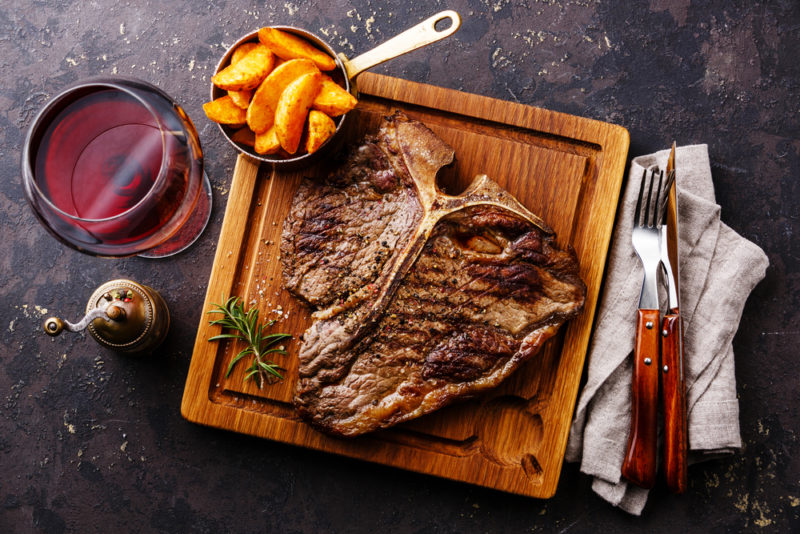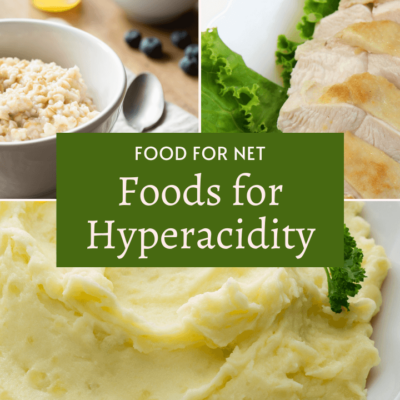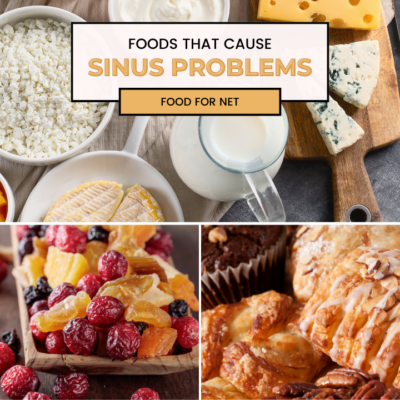
Uric acid is a waste product. It’s something that our bodies produce when they digest purine rich foods. This means that you won’t exactly find food high in uric acid. However, plenty of foods are sources of purines. These are the ones that you need to watch out for.
So, does uric acid matter? Well, your body can generally filter out excess uric acid. But, this doesn’t always happen. One problem is if you consume high amounts of purines in your diet. Your body might not be able to keep up with uric acid that’s produced, so the acid can build up.
Uric acid can build up for other reasons too, with stress, obesity, and genetics being some of the underlying causes. When this happens, you can end up with too much acidity in your blood or your urine and could develop gout.
Some of the risk factors for gout aren’t easy to change. Thankfully, you have control over the foods that you eat. You can choose to focus on foods that are low in purines, ones that won’t leave you with too much uric acid. The foods we’re focusing on in this list are all ones you should avoid or, at least, limit your intake of.
If you’re looking for healthy options instead, why not look at our lists of food for concentration or nutrient-dense foods? The foods featured in those lists have many advantages for your health.
Foods That Are High In Uric Acid
- Organ Meats
- Some Fish and Shellfish
- Red Meat
- Pork
- Chicken and Turkey
- Dried Beans
- Peas
- Lentils
- Spinach
- Asparagus
- Cauliflower
- Mushrooms
- Sugary Foods (and Drinks)
- Alcohol
Organ Meats

While organ meats aren’t the most popular food in town, many people do eat this type of meat regularly. For purines, we’re particularly worried about kidneys and liver, along with any glandular meat, like the pancreas. These are higher in purines than other types of organ meats.
That being said, organ meats aren’t unhealthy. They’re even well-known for their nutrient density. This can make them excellent ways to improve health, but only in some situations. The trick is to keep an eye on your portion sizes and make sure you’re not overdoing it in any area.
Some Fish and Shellfish

Fish and shellfish are widely promoted for their health benefits, as they’re a source of omega-3 fatty acids, while also being a quality choice for protein. Yet, fish and shellfish have their problems too.
One of these is mercury, which accumulates in some types of fish more than others. There can also be contamination, along with industry-related problems like overfishing.
Then there’s the purine content. High purine fish include sardines, trout, codfish, herring, and mussels. Shellfish tend to be lower in purines, but there are some moderate-purine shellfish to watch out for, like shrimp, crab, and oysters.
Unfortunately, that list touches on many favorites, along with some of the best fish for omega-3 fatty acids. And, that wasn’t a complete list. We’d be here for much longer if we highlighted every type of fish and shellfish that you need to be careful with.
Still, you don’t need to cut fish and shellfish out of your diet entirely. They do offer benefits and can be safe if you’re eating them in moderation.
Red Meat

You might notice one pattern with the foods on this list. Many of them are high in protein and animal protein foods tend to top the list. This is because there’s a link between protein digestion and the production of uric acid.
But, you can’t simply avoid protein. Our bodies need protein for countless functions, including muscle development. Not getting enough protein can lead to many health problems. A low protein diet can also leave you hungry much of the time and could even make you gain weight, as you’ll often be craving snacks.
Besides, even if you have gout, you can still have some red meat in your diet. The trick is to focus on small portions of purine rich meat at a time, like three-ounce servings of red meat. This way your body can process the amount of purines that it is receiving.
Having some meatless days can help as well. For these, you’d be focusing on plant-based sources of protein instead of peat. These don’t tend to produce as much uric acid. They’re also free from many of the controversies that surround red meat.
Pork

Not surprisingly, pork is another source of purines. This includes processed pork products too, like sausages and bacon. Processed meat is something to be careful with anyway, as it’s been linked to other health problems.
The same ideas apply here as for red meat – you can still have pork, but keep the quantities small and don’t eat pork every day.
It’s worth choosing quality pork products as well. Doing so mightn’t affect your uric acid levels, but high quality meat is always better for your health than something low quality.
Chicken and Turkey

Chicken and turkey are often seen as being healthier than red meat. After all, even lean cuts of red meat tend to have a decent amount of saturated fat, while poultry is leaner. You’re getting plenty of nutrients either way, although there are differences between one type of meat and the next.
Even if poultry is truly healthier than red meat (and there’s plenty of debate on that topic), chicken is still a moderate source of purines. Turkey may be worse, as it features on some high purine food lists, next to organ meats and some types of fish.
This means that, once again, you need to be careful with your quantities. Rather than skipping poultry altogether, keep your portions small and don’t solely rely on animal-based protein.
Other types of white meat are likely to be high in purines too, like goose and duck. In fact, as far as purines are concerned, you can treat all types of meat as roughly the same. While their exact purine levels might differ a little, the purines are always high enough that you need to be cautious.
Dried Beans

It seems like beans can never escape controversy. They’re already criticized as being high in antinutrients and some people even avoid beans and other legumes entirely.
Beans often feature in lists of high purine foods too, with dried beans being the biggest culprit. The protein content does vary depending on the type of bean, so you have some flexibility.
The highest purine beans include black eyed peas and great northern beans. Other types of beans contain fewer purines, including garbanzo beans, which are lower than most others.
However, the classification of beans as a high purine food is based on a serving size of 100 grams of dried beans. This equates to around 1.5 cups of cooked beans, which is much higher than the normal serving size of beans. If you’re only eating around half a cup of cooked beans at a time, then beans may be a relatively low purine choice.
Plus, beans are a plant-based source of purines. Animal-based purines tend to have more negative effects than plant-based ones.
Peas

So far, we’ve been talking about high purine foods that contain a decent amount of protein. While many purine foods fall into this category, there are exceptions too.
Green peas are one of these exceptions. They’re often classified as moderate purine foods. This roughly means that they have between 50 and 150 mg of purines per 100 grams. They’re unusual, as there is only a handful of fresh foods that contain a decent amount of purines.
Dried peas are even more notable, including split green peas and split yellow peas. These contain a similar amount of purines to meat and poultry.
Lentils

Lentils are another type of moderate purine food. This isn’t surprising, as they’re another source of plant-based protein and can be used in a similar way to dried beans.
While moderating the amount of lentils you eat is important, don’t see them as an unhealthy food. They still contain many nutrients and have plenty of benefits. This pattern is similar to the other items that we’ve highlighted on this list.
Spinach

Spinach is a vegetable of contradictions. On one hand, it’s a dark leafy green that’s highly nutritious. Its nutrient content is why you’ll see spinach feature on so many healthy food lists.
Spinach also has a dark side, as it’s one of the highest oxalate vegetables that you’ll find. This may be reason enough to avoid it. Then there’s the purine content. Spinach is a high purine food, so it could lead to uric acid buildup.
But, there’s something interesting going on here. While spinach is often found on lists of high purine foods, it doesn’t appear to increase gout risk. This suggests that the purines may be processed differently than those in other items on this list – and you might still be able to eat spinach regularly.
The fiber in spinach could be one reason why it doesn’t affect gout risk as you might expect. Fiber has been linked to various benefits, like maintaining blood sugar levels and helping you to stay satisfied. A high fiber diet can also help your body to flush out uric acid, preventing it from building up.
Asparagus

Just like spinach, asparagus is high in purines, but it hasn’t been linked to an increase in gout risk. It’s also a delicious green vegetable that gives you a decent amount of fiber, folate, and vitamin K.
Asparagus has also been linked to health benefits. For example, it might help to improve your digestion, decrease blood pressure, and even aid in weight loss.
If you’re worried about the uric acid levels, try having asparagus every so often and focus on a varied diet. Varying your diet means that you get a wide selection of beneficial compounds and the risk of any excesses is much lower.
Cauliflower

This might seem surprising, but cauliflower is a high purine vegetable. If you have gout, you might need to avoid cauliflower entirely – as an increase in uric acid can make your symptoms worse. If you’re worried about gout instead, you may still be able to eat cauliflower, as long as you watch how often you have it.
It’s important to talk about cauliflower, as this vegetable is so important for low carb and keto dieters. For example, you might see cauliflower rice, cauliflower pizza crusts, cauliflower ‘chicken’ wings, cauliflower mac and cheese, and even cauliflower bread.
Using cauliflower like this is a fantastic idea, just make sure that you don’t rely on the vegetable too heavily. Use other options when you can, like broccoli, which is still low in carbs and doesn’t contain many purines either.
Mushrooms

Mushrooms are another interesting addition to this list. They’re fungi, rather than being a type of plant or animal. This doesn’t stop them from being high in purines.
Should you avoid mushrooms if you’re worried about gout? Well, not necessarily.
First of all, you don’t really need to avoid any foods. The trick is to keep your portions reasonable and make sure your diet focuses on low purine foods. This way you’re still getting the important nutrients that you need and aren’t overdoing it with the purines.
Purines from plants mightn’t have the same impacts as animal-based ones either. We’ve already seen this pattern with asparagus and spinach. Both of those vegetables don’t have the expected impact on gout.
Because mushrooms aren’t plants or animals, they offer different advantages than other foods on this list. Take their vitamin D content as an example. It’s rare to find vitamin D in food, but most mushrooms provide vitamin D. More importantly, mushrooms offer the D3 form of vitamin D, while plants provide the less powerful D2 form.
Sugary Foods (and Drinks)

While high-protein foods (and some vegetables) tend to be rich in purines, they’re not the only potential causes of uric acid buildup. It’s now clear that sugar can also contribute to uric acid levels.
Pay close attention to foods that have plenty of added sugar, especially those that rely on high fructose corn syrup. The fructose is the important part here, as this is the type of simple sugar that’s been linked to uric acid levels.
You’ll get some fructose in natural foods too, including fruit and fruit juice. After all, regular sugar, which we sometimes call sucrose, is a 50/50 mix of fructose and glucose. High fructose corn syrup uses around 55% fructose instead. That difference mightn’t sound like much, but it can add up, especially if your diet contains a lot of high fructose corn syrup and sugar.
The best choice will always be to focus on whole foods. Avoid processed options whenever you can and if you are going to have some processed foods, check out the ingredients labels first. Whenever possible, focus on ones that have a short ingredients list and rely on whole food ingredients.
Alcohol

We can’t forget about alcohol. Many of us enjoy alcohol on occasion and unfortunately, alcohol can increase the risk of gout. However, most of the problems are linked to grain-based alcohols. This includes spirits like vodka that can be distilled from wheat.
Beer is often seen as the most serious issue here. The drink can increase the risk of gout flare ups and may make you more likely to develop gout as well. This is particularly true if you’re drinking multiple servings of beer at a time.
Still, don’t assume you can be out of the woods by focusing on wine instead of beer. Some evidence suggests that people with gout can get flare ups from wine too. This could mean that you need to keep your alcohol consumption to a minimum to protect your health.











 The Best Coconut Rum
The Best Coconut Rum
I’m just learning about uric acid buildup and I know eating high amounts of protein in general cause you genes to get dirty. Reference Dr Ben Lynchs book Dirty Genes and believe me these chemical buildup and more lead to mood issues, depression, sleep problems etc.